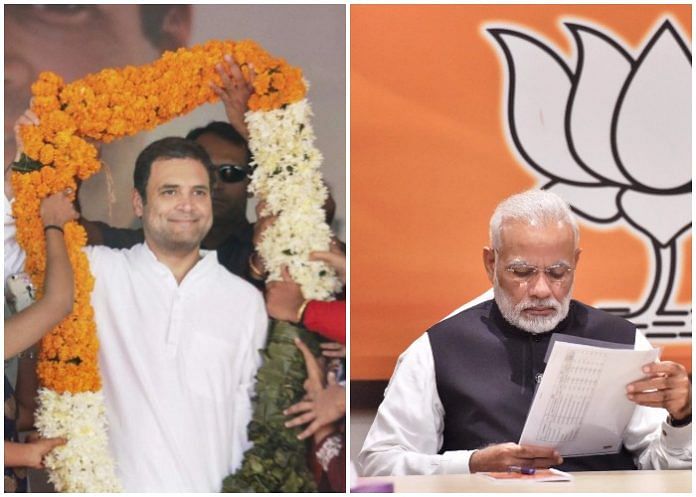Caste and regional divides will influence Gujarat elections next month but newer concerns such as the economic slowdown and aspirations for progress will also matter.
Ahmedabad: The importance of next month’s assembly elections in Gujarat can be gauged from the carefully crafted strategies of the Congress and BJP and how deeply invested top leaders such as BJP president Amit Shah and Congress vice president Rahul Gandhi are.
Crucial to the state’s politics and elections are its geographical and social contours. To put it in perspective, Gujarat is broadly divided into four regions: Saurashtra or Kathiawar, North Gujarat, Central Gujarat and South Gujarat.
Saurashtra – the BJP bastion
Saurashtra is historically the backbone of the Gujarat BJP, a region that voted against the Congress even in the 1960s and 1970s. Former chief minister and political heavyweight Keshubhai Patel belongs to this region.
In terms of the caste matrix, the Leuva Patels and Koli Community dominate the region. Importantly, Kolis are electorally the largest caste group in Gujarat. The Saurashtra region has stood with the BJP in the assembly elections in 1995, 1998, 2002, 2007 and 2012.
Saurashtra is also the hub of farmers and the rights of cotton farmers has been a major issue here. Low prices of cotton have impacted them significantly. The region is also known for its ceramic industry, which has been hit after demonetisation and GST roll-out.
Another key concern is the severe water crisis and access to Narmada waters. All these factors will influence the election discourse here.
North Gujarat – where Modi hails from
The districts above Ahmedabad comprises the North Gujarat region, to which Prime Minister Narendra Modi belongs. This is the zone where the BJP did not perform well in 2012 and even now, this is seen as the weakest region for the BJP.
The Kadva Patels, Rajputs, Thakors and Chaudhary communities are dominant in the region and except the Kadva Patels, these are all loyal Congress voter bases.
This region includes Mehsana, the hub of the Patel agitation. This is also the area most affected by the floods a few months ago.
Central Gujarat – where the Congress holds some sway
Central Gujarat consists of the prosperous and relatively more urban parts of Gujarat.
Areas like Kheda and Anand have been the backbone of the Congress in the state, the home region of senior Congress leader Bharatsinh Solanki. This region is a complex mix of urban, rural and tribal populations.
South Gujarat – where the BJP wants to make inroads
South Gujarat is the tribal-dominated part of the state, the community among which the Rashtriya Swayamsevak Sangh (RSS) and the BJP have attempted to work intensively.
The hub of this region — Surat, known for its diamond industry — witnessed significant anti-GST agitation as well as the Patel protests.
This is the home ground of Ahmed Patel, senior Congress leader and political secretary to party president Sonia Gandhi, who hails from Bharuch district, the only district where BJP won 100 per cent of the seats in the 2012 assembly elections.
The Gujarat assembly has 182 seats, of which the BJP won 116 and the Congress 60 in 2012.
The election, to be held in two phases on 9 December and 14 December, will be influenced not just by the traditional factors that shape the state’s polity, but also newer narratives, including the impact of demonetisation, GST and the Patidar agitation demanding reservations as well as attempts by the Congress to forge a rainbow caste coalition of Patels, OBCs, and Dalits.



